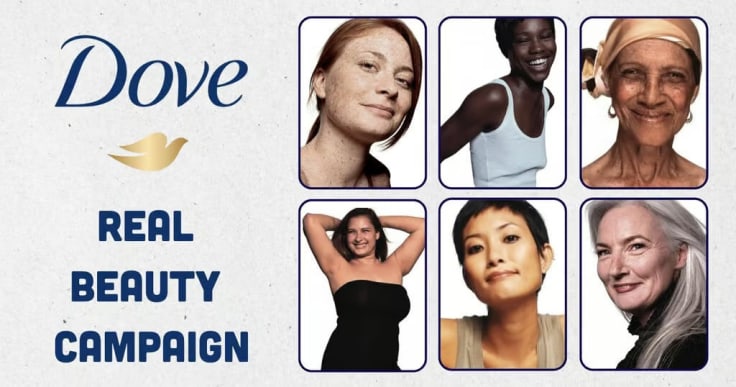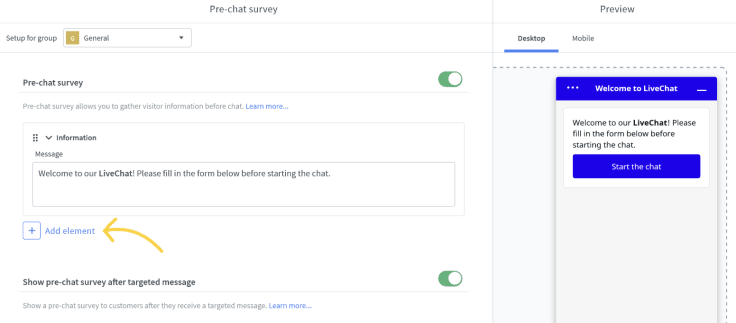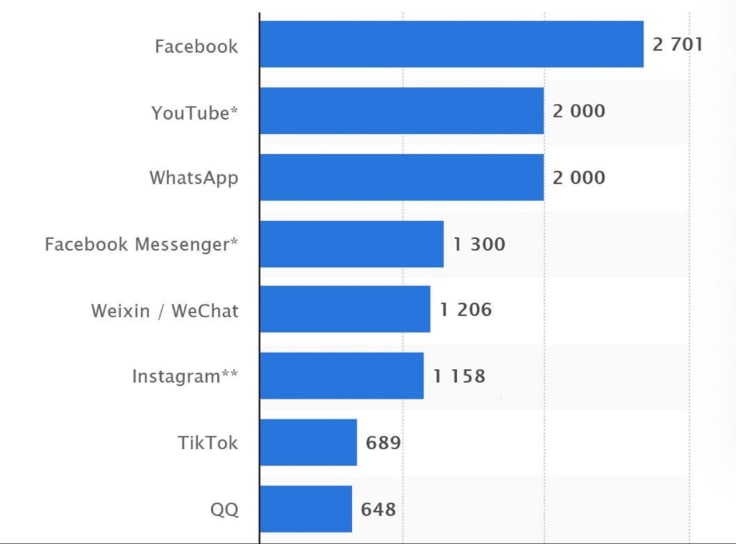
Every business starts with a simple goal: to meet customer needs.
But just meeting customer needs isn’t enough anymore. You need to stay ahead, figuring out what people want before they even ask. That’s how your brand create real connections and keep customers coming back.
But here’s the catch: many companies end up spending their time and money on things that don’t actually matter to their customers. According to a survey by Khoros, 44% of brands think recommending products based on past purchases is key, yet only 11% of customers feel the same way.
What really matters to customers? It might be a checkout process that’s quick and hassle-free, a product that solves a nagging issue, or just knowing they’ll get great support when they need it. To learn these insights you need a good customer needs analysis.
In this article, I'll explore what customer needs are, why they matter, and how businesses can not only meet but exceed those needs to build loyal, raving fans.
People want to feel a real connection with brands, and 75% say they’d rather hear a genuine, human voice than a perfectly polished brand message.
Let's explore the benefits of understanding customer needs. From reviewing recurring customer questions to a customer needs analysis conducting social listening, and analyzing data, we'll provide the tools and methods you need to uncover what your customers truly want.
What are customer needs?
Customer needs are the wants, expectations, and requirements that customers have when they interact with a business. It could be something practical, like wanting your food order delivered on time, or something emotional, like feeling appreciated as a loyal customer.
When companies understand and meet these needs, they don’t just gain a customer — they gain loyalty, which is a business necessity today. Meeting customer needs is what separates brands that thrive from those that barely survive.
But where do you even start? With customer journey mapping. Think of it as detective work — mapping out every step of your customer’s experience to uncover what makes them tick. Whether it’s through direct feedback, analyzing their behavior, or listening to what they’re saying (or not saying), every clue helps you create a better, more seamless experience.
The three main types of customer needs
Alright, let’s talk specifics. Not all customer needs are created equal. Broadly speaking, they fall into three categories:
Functional needs
These are the basics — the practical, must-have elements that customers expect. Think of them as the foundation of any product or service. These needs are all about solving a problem or fulfilling a specific purpose.
Examples:
As for smartphones, it is reliable connectivity and ease of use. For instance, Apple’s iPhone meets these customer needs with its intuitive design and advanced features.
A food delivery app’s functional need is to get meals delivered accurately and on time. Think about how apps like DoorDash or Uber Eats ensure their orders are trackable.
But here’s the twist: customer-centric companies go beyond the basics to exceed these expectations and create a "wow" factor. For example, a delivery service that delivers on time and includes a personalized thank-you note creates a memorable experience.
Emotional needs
Now we’re getting personal. Emotional needs are all about how customers feel while interacting with your brand. Do they feel valued? Are they confident they made the right choice? When a brand connects on an emotional level, it makes a real difference.
Examples:
Customer service interactions can also meet customer needs on emotional level. For instance, LiveChat’s real-time, empathetic support ensures customers feel heard and respected, turning a potentially frustrating situation into a positive experience.
A luxury brand, like Rolex, doesn’t just sell watches — it sells a sense of accomplishment and pride. Wearing a Rolex is about more than telling time, it’s about telling a story of success.

Social needs
Humans are social creatures, and that applies to their interactions with businesses too. Social needs revolve around status, identity, and connection. Customers often choose brands that reflect who they are (or who they aspire to be) or those that help them connect with like-minded communities.
Examples:
Exclusive loyalty programs like Starbucks Rewards make customers feel like they’re part of an insider group, offering perks and recognition that build a sense of belonging.
LiveChat’s customer stories show how businesses use their platform to create easy interactions, fostering trust and community-building among their own customers.
By understanding customer needs, your company can craft experiences that resonate with your clients on multiple levels.
The benefits of identifying and understanding customer needs
What do you gain by focusing on customer needs? A competitive edge that touches every aspect of your business.
From building brand loyalty and crafting personalized marketing campaigns to boosting sales with customer feedback, understanding what makes your audience tick helps you create experiences they’ll love.
Boosting brand loyalty
Brand loyalty is the holy grail of any business. It keeps customers repeatedly returning and sets you apart from your competitors.
But how do you cultivate brand loyalty?
When you take the time to understand your customers' needs and preferences, you can tailor your products and services to meet those needs. This creates a more personalized customer experience, increasing satisfaction and loyalty. It's like having a personal shopper who always knows exactly what you want!
Consistently meeting customer needs is key to building relationships that last. When customers trust your brand, they’re more likely to stick with you and recommend your products or services to others.
Creating more customized marketing campaigns
Marketing campaigns are a great way to get your brand in front of your target audience. But to succeed, your campaigns must be customized to your audience's needs and preferences.
By identifying the types of customer needs first, you can learn the following:
- Their goals and pain points will help you determine what to focus on in your messaging so your target clients can relate to you.
- What values and beliefs they represent so that you can adjust your offer. For example, if you find out that your potential customers care about the environment, you can use your biodegradable boxes to package their orders.
- What communication platforms they prefer, such as email, social media, or live chat.
One example of an excellent marketing campaign deeply vested in meeting customer needs is Dove's "Real Beauty" campaign. The campaign was launched in 2004 and aimed to redefine beauty standards by celebrating the natural beauty of everyday women.
Dove conducted a study that revealed that only 2% of women worldwide considered themselves beautiful. The brand recognized this as a universal problem and launched the "Real Beauty" campaign to address it. It included a series of ads featuring real women of all ages, shapes, and sizes, with the tagline "Real beauty comes in all shapes and sizes."

The campaign resonated with women worldwide and was a huge success. It received widespread media coverage and generated a lot of positive buzz on social media. Dove's focus on the customer needs and insecurities of its target audience created a strong emotional connection with its customers and helped to build brand loyalty.
The result?
Dove sales grew from $2 billion to $4 billion in three years. This was only possible due to prior research on the target group.
But let's go even further.
Understanding the importance of customer feedback
You should conduct market research and analyze customer feedback to gain valuable insights into what your customers seek and value most. This helps you tweak your products and services to match what your customers want.
When you meet their needs and exceed their expectations, you create a loyal customer base that is more likely to return and recommend your products or services to others.
But it’s not only about that. It's also about anticipating customer needs and providing solutions before they know they need them.
So, to improve your sales, start by conducting market research and analyzing customer feedback.
How to identify customer needs
Let’s get specific about this. How can we identify our customers' needs to make them happy?
Too many companies stumble at this step. They assume they know what their customers want without digging deeper, leading to mismatched expectations and missed opportunities.
Take, for example, a business that launches a new product without conducting proper research. They might think they’re offering something groundbreaking, but without understanding their customers' real challenges or desires, the product can fall flat.
Review the most recurring questions from customers
One of the easiest ways to identify your customers' needs is by reviewing their most recurring questions. This method is advantageous in identifying common customer pain points and areas where your clients might be experiencing frustration.
Start by finding the most frequently asked questions in customer interactions, whether through phone calls, emails, or chats. Look for patterns in these questions and try to categorize them thematically. Once you've identified these patterns, you can address these issues proactively through an FAQ section on your website or by training your customer support team to address them before they become the customers’ problems.
Run customer satisfaction surveys
How do you go about running customer satisfaction surveys?
There are three metrics you should take a look at:
- Net promoter score (NPS)
- Customer satisfaction (CSAT)
- Customer effort score (CES)
The first metric lets you assess customer loyalty and calculate the proportions between those who love and hate your brand. The second focuses on measuring client satisfaction levels, while the latter checks how easy it is to complete any selected process (payment).
You can run these and other surveys easily through live chat or chatbot software if you use these tools to communicate with your target customers. With pre-chat surveys, you can gather important details from your customers before the conversation even starts. You can tweak the survey fields to ask for things like their name, email, or why they’re reaching out. This helps your team get a head start and offer more personalized support right away. For example, you could ask, “What brings you here today?” or “How can we help?” to make sure chats are prioritized and routed to the right people.

Post-chat surveys, on the other hand, focus on gathering feedback after the conversation ends. These surveys can be customized with open-ended questions to gain deeper insights. For example, if a customer leaves a low score, you can include follow-up questions like, "What could we improve to better meet your needs?" For high scores, you might ask, "What did you enjoy most about this experience?"
LiveChat lets you customize your surveys to match your brand’s style, so everything feels cohesive and professional. Plus, you can check responses in real time right in the LiveChat dashboard. This makes it easy to spot trends, figure out what’s not working, and highlight what’s making you shine compared to the competition.
Check out the LiveChat Help Center's guide to see how easy it is to set up and customize these surveys.
Conduct social listening
Monitoring your social media accounts and keeping an ear to the ground can bring valuable insights into what your customers say about your business and what they want from you.
This process is known as social listening, and it involves monitoring social media channels for mentions of your brand, your competitors, and your industry.

One of the benefits of social listening is that it can help you identify customers that are the most loyal. These are the customers who are actively engaging with your product features or brand and sharing positive feedback.
To conduct social listening, you must use the right tools (like Google Alerts) to monitor social media channels and identify relevant keywords and hashtags.
I like to listen. I have learned a great deal from listening carefully. Most people never listen.
Run competition research
Last but not least, understand your competition. It is a crucial part of meeting your customers' needs. You can identify market gaps and better understand what your customers seek by conducting thorough research on your competitors.
First, identify your top competitors and analyze their marketing strategies, product offerings, and customer engagement. In customer focus groups, look for ways your competitors meet your customers' needs and identify areas where you may need to catch up.
Another important aspect of competition research is keeping an eye on emerging trends and changes in the market. By staying up-to-date on the latest industry news and innovations, you can position your business as a leader in meeting your customers' needs.

How to conduct a customer needs analysis
Once you’ve collected the data, it’s time to begin your analysis. To do this effectively, you need a systematic approach. A customer needs analysis isn’t just about crunching numbers or reading feedback, but about finding patterns, and uncovering what truly matters to your audience.
This is your chance to move beyond assumptions and build a strategy that’s grounded in real customer insights.
Let’s break it down step-by-step and see how you can turn data on customer needs into a game plan for success.
| Step | What to do | Why itâs important |
| #1. Categorize your results thematically | Review all the data youâve collected and organize it into meaningful groups such as pricing strategies, product features, quality, or customer experience. Break down ambiguous feedback into clear categories to identify common threads. | By grouping data into themes, you can spot patterns and trends that help prioritize areas for improvement. |
| #2. Conduct a means-end analysis | Dive deeper into your results by analyzing the connection between product features, the benefits they provide, and the overall value they deliver to customers. Focus on why customers are making purchasing decisions. | This approach helps you understand what drives your customers, so you can create products and messages that connect with them both practically and emotionally. |
| #3. Visualize your results | Use tools like Miro or Tableau to create charts, graphs, personas, or journey maps that showcase your data in an easy-to-understand format. Highlight key insights visually to make them digestible for all stakeholders. | Visuals make complex data easier to understand, helping teams work together and get on board. |
| #4. Put your results into action | Develop a detailed action plan that includes specific goals, key performance indicators (KPIs), and assigned responsibilities. Prioritize quick wins and long-term strategies. | Using insights to drive real actions turns your ideas into meaningful changes and results that matter. |
Remember that the last step of your customer needs analysis is the most important — put your results into action!
Create an action plan that includes KPIs, objectives and key eesults (OKRs), and ideas for improvement, along with a list of people responsible for the delivery of your objectives.
For example, if your research shows customers want a feature to make segmentation easier, you can add it to your product roadmap with a clear deadline. Keep reviewing your plan and make sure everyone stays accountable for hitting the goals.

Discover company that keeps loyal customers
At LiveChat, we are dedicated to serving our customers and delivering on our promises.
Our commitment to exceptional customer service starts with providing around-the-clock support through a combination of resources, including our live chat and chatbot. But that's not all — our help center addresses common questions and offers valuable inspiration and ideas.
Our willingness to say "yes" to our customers sets us apart. To be genuinely customer-focused, we must be flexible. To stay true to our word, we develop short-term and long-term plans for each client. This involves understanding their goals for each quarter and any upcoming milestones.
For example, if we learn that a client plans to hire more customer support staff and will need additional seats in their subscription plan, we can offer them custom pricing or a special deal in advance. Customer needs are our priority.
Understand your customers to ensure business success
Let's put it in a way that will make you sit up and take notice. The key takeaway from this article is that knowing and understanding customer's needs is crucial for businesses.
And why is that? Simply put, it's because your customers are the lifeblood of your company! Without them, you'd have no sales, no revenue, and no business to run.
So, if you're a business owner, it's time to take action. Use surveys, focus groups, and social media analytics to gather insights into your customers' wants. And then use that information to improve your products, services, and overall customer experience.
Trust us. It'll pay off in the long run!




